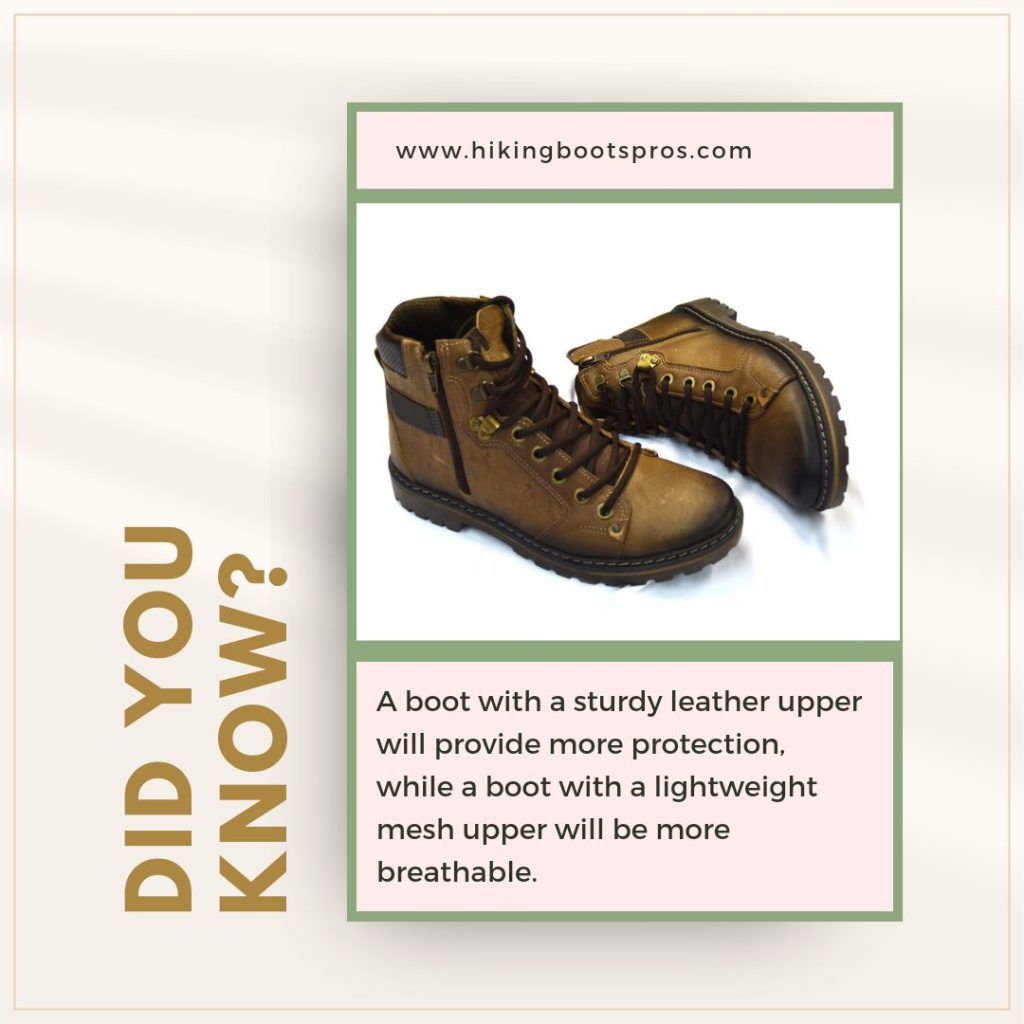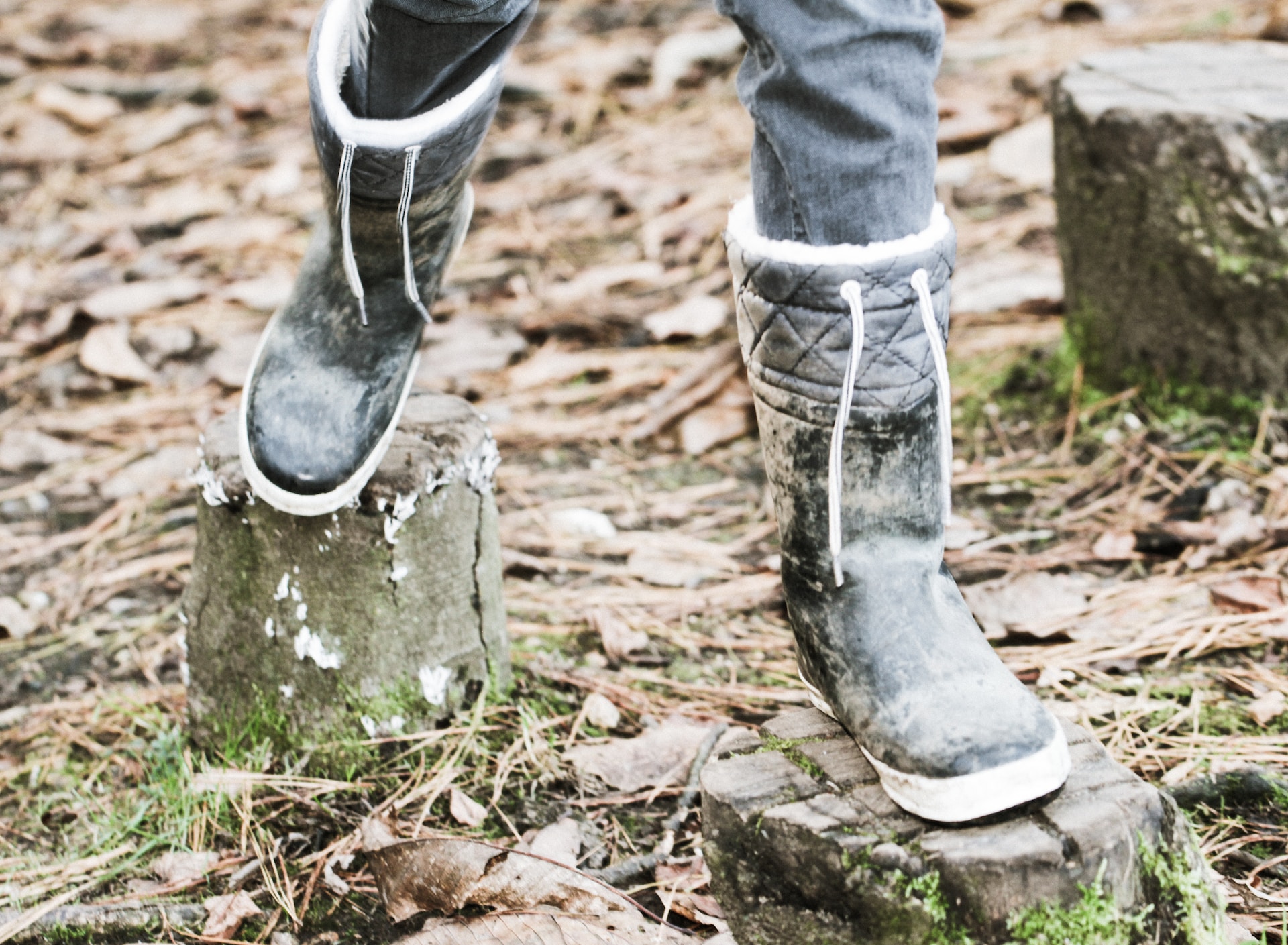Hiking boots are a crucial part of any outdoor gear collection, providing support and protection for your feet on rugged terrain. But how are hiking boots different from regular boots?
In this blog post, we’ll explore the anatomy of hiking boots, the different types of hiking boots, and the features to look for when choosing the perfect pair.
They are designed specifically for hiking and outdoor activities, with features that set them apart from regular boots. They are made to provide support and protection for your feet on rough and uneven terrain.
What Is the Anatomy of Hiking Boots?
Hiking boots are composed of different parts that work together to provide comfort and support. The upper, midsole, and outsole are the main components, and the materials used in each can affect the performance of the boot.
Different parts of a hiking boot
The upper is the part of the boot that covers the foot and ankle. It’s made of various materials, including leather, mesh, and synthetic fabrics. The midsole is the layer between the upper and the outsole, providing cushioning and support. The outsole is the bottom part of the boot that makes contact with the ground.
Materials used in hiking boots
Materials used in hiking boots can vary depending on the intended use and the level of support required. Leather is a durable and waterproof option, while synthetic materials can be lightweight and breathable.
Affect performance

The materials used in each part of the boot can affect its overall performance. A boot with a sturdy leather upper will provide more protection, while a boot with a lightweight mesh upper will be more breathable.
What Are the Types of Hiking Boots?
When it comes to hiking boots, there are many different types to choose from. Each type is designed to suit different terrains and activities. Let’s take a look at the most common types of hiking boots.
Different types of hiking boots
Trail shoes are low-cut hiking shoes that are perfect for day hikes and easy trails. They are lightweight and flexible, which makes them great for people who prefer a more minimalist shoe. Hiking shoes are also low-cut, but they provide more support and protection than trail shoes. They are perfect for day hikes and multi-day hikes on well-maintained trails.
Hiking boots are taller and sturdier than hiking shoes. They provide better ankle support and protection on rough terrain. They are perfect for long hikes and backpacking trips. Mountaineering boots are heavy-duty boots that are designed for high altitude and extreme weather conditions. They are perfect for mountaineering and alpine climbing.
Choosing the right type
When it comes to choosing the right type of hiking boot, you need to consider the type of terrain you plan on hiking on, the length of your hike, and your personal preferences. Always choose a boot that fits well and provides the right amount of support and protection for your needs.
How to Fit Hiking Boots?
Now that you know the different types of hiking boots, it’s important to know how to fit them properly. A well-fitted hiking boot will provide the necessary support and comfort for your feet on the trail. Here are some tips on how to fit hiking boots.
Try on boots in the afternoon: Your feet tend to swell throughout the day, so it’s important to try on boots when your feet are at their largest. Wear the socks you plan on wearing on the trail when trying on boots. This will ensure a proper fit. Walk around the store in the boots to get a feel for them. Make sure your toes have enough room and that the boot doesn’t pinch or rub anywhere.
What Features to Look For in Hiking Boots?
When shopping for hiking boots, there are several essential features that you should consider. These features will determine how comfortable, supportive, and protective your boots are on the trail. Let’s take a closer look at some of the most important features.
Waterproofing and Breathability
One of the most critical features of hiking boots is waterproofing. When you’re out on the trail, you’re likely to encounter various terrains and weather conditions. Wet feet can be uncomfortable and can lead to blisters or other foot problems. Therefore, it’s essential to choose hiking boots that are waterproof.
Most hiking boots have waterproof membranes that keep water out while allowing your feet to breathe. Gore-Tex is one of the most popular waterproof membranes used in hiking boots. It’s a breathable membrane that keeps water out while allowing sweat to escape. This feature is essential in preventing your feet from getting wet and sweaty, which can lead to discomfort and blisters.
Traction and Grip
Another crucial feature to consider is traction and grip. When hiking, you’re likely to encounter various terrain types, including rocks, mud, and gravel. Therefore, it’s crucial to choose hiking boots that have excellent traction and grip to prevent slipping and falling.
The sole of the boot is the most critical component when it comes to traction and grip. Look for boots that have deep lugs on the sole, as they provide a better grip on slippery surfaces. Vibram is a popular brand that manufactures high-quality soles for hiking boots. The sole should also be made of a durable material that can withstand wear and tear over time.
Durability and Weight
The durability and weight of hiking boots are also essential features to consider. Hiking boots are an investment, and you want to ensure that they last for several years. Therefore, it’s important to choose boots that are made of high-quality materials and can withstand the rigors of hiking.
Leather is a popular material used in hiking boots as it’s durable and can withstand abrasions and other wear and tear. However, leather boots tend to be heavier than synthetic materials. Therefore, it’s essential to find a balance between durability and weight when choosing your boots.
Have A Look At: Why do hiking boots have thick soles
Conclusion
In conclusion, hiking boots are different from regular boots in that they are specifically designed for outdoor activities. Understanding the anatomy of hiking boots, the different types available, and the features to look for will help you choose the perfect pair for your next adventure. So get out there and explore with the right pair of hiking boots!
FAQs
While you can technically use regular sneakers for hiking, it is not recommended. Hiking boots provide better support, protection, and traction, especially on uneven terrain.
Hiking boots can be more expensive than regular shoes because they are designed to withstand more wear and tear, and they have specialized features such as waterproofing and durable materials.

Tyler Looney is an avid hiking enthusiast and the author of HikingBootsPros.com, a website dedicated to providing helpful insights and advice on choosing the best hiking boots. His expertise and passion for hiking have made him a valuable resource for both beginner and experienced hikers alike.

